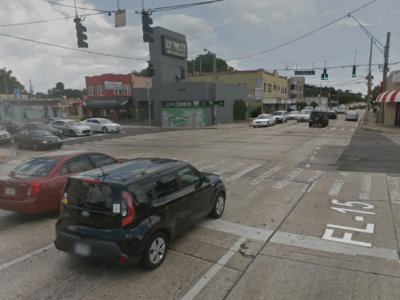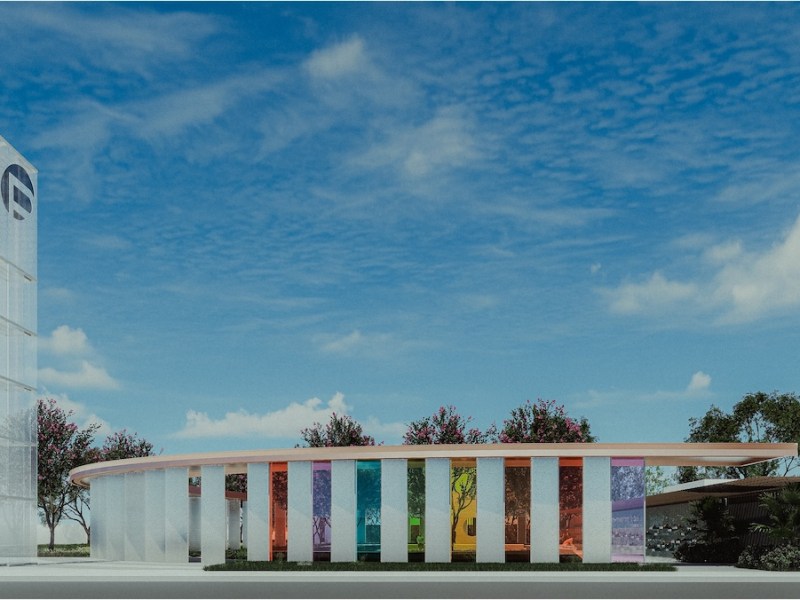Orlando city commissioners on Monday signaled approval for a plan to install 35 new red light cameras at city intersections by next summer in an effort to reduce dangerous crashes and improve roadway safety. The program issues fines to drivers who are caught running red lights, and is meant to deter repeat bad behavior.
Currently, the city’s Orlando STOPS program has 45 red light cameras installed at 25 intersections across Orlando — representing just 5 percent of the city’s total number of intersections. Targeted intersections for the cameras are chosen through crash and fatality data that shows the intersections have historically posed a “heightened safety risk,” according to the city.
Orlando is one of at least 38 different municipalities across Florida that has this kind of red light camera program in place, according to an estimate from the Florida Department of Highway Safety and Motor Vehicles, including Orange County, Maitland, Winter Park, Kissimmee and Ocoee.
Orlando first passed an ordinance to set up this red light camera program in 2008 — and later fought the state in court over it, since the city did so before it received authorization from the state.
An updated version of the city’s red light camera ordinance, approved by city council Monday, shows that potential targets for new red light cameras include multiple intersections along Colonial Drive (including the no-left-turn Colonial and Mills Ave), and several intersections on John Young Parkway and Kirkman Road, among others.
“I know that it has definitely saved lives,” shared Orlando city commissioner Tony Ortiz, who is reportedly considering a run for Orlando mayor.
A city spokesperson told Orlando Weekly that, over the last five years, cameras at existing locations have helped reduce angle crashes by 22 percent at the intersections where they are installed. According to data provided to Orlando Weekly by the city, angle crashes specifically decreased from just nine total in 2020 to seven in 2024. That’s after crashes increased to 10 in 2021, 14 in 2022, and back down to 13 in 2023.
A report put together by the FLHSMV similarly offers flimsy findings, showing mixed results. According to a 2024 report from the state agency, the total number of crashes at intersections in Orlando with these cameras has actually increased from 2,374 crashes prior to camera installation to 2,610 crashes after. Angle crashes specifically — where the front of a vehicle hits the side of another — have increased from 557 crashes before installation to 607 after.
It’s unclear what exactly caused the increase in crashes, as that is not explained or investigated in the state report. (As we should all remember, association does not equal causality.) A city spokesperson explained that different methodology between the state and city reports — such as the date when that data is accessed — may account for discrepancies.
Studies on similar programs elsewhere have found that while red light cameras can reduce angle crashes, they have simultaneously been associated with an increase in rear-end crashes. The Insurance Institute on Highway Safety notes, however, that rear-end crashes tend to be less severe than angle crashes.
A 2005 study sponsored by the Federal Highway Administration, evaluating camera programs in seven cities, similarly found an increase in rear-end crashes following camera installation, but noted that because of the comparative cost and severity, this “does not negate the decrease in the right-angle crashes targeted by red-light-camera systems.”
As WLRN shared in its own investigation of red light programs in South Florida last year, these programs can be very lucrative for local governments, drawing in millions of dollars from fines issued to drivers each year.
According to city records, Orlando collected $7.6 million total from the program over the last fiscal year, stemming from more than 60,000 violation notices issued to drivers and 20, 412 uniform traffic citations issued to drivers who didn’t pay up after receiving their initial notice.
Drivers are initially fined $158 for a red light violation (i.e. crossing into an intersection after the light has turned red), but if you don’t pay within 90 days, that fine can go up to $262 for the traffic citation. There is no mark added to your driver’s record if you pay the initial fine on time.
The city itself collected $4.2 million from the program over the last fiscal year, while the state got its own $3.4 million split. A city spokesperson told Orlando Weekly that the city’s share of revenue “goes directly into the City’s Vision Zero Traffic Safety Fund, which is dedicated to eliminating traffic deaths and serious injuries by enhancing roadways and reinvesting in safer streets for everyone.”
According to city records, the program collected $7.6 million total in fines over the last fiscal year alone
The state’s split of revenues, meanwhile, is distributed to the state Department of Revenue, to be put into a trust fund for spinal and brain injury victims and trauma centers at medical centers that treat victim of vehicular accidents.
Orlando city commissioner Patty Sheehan, who praised the camera program, admitted Monday, “I wish we could keep more of the money locally in order to be able to do more safety improvements.”
According to the city’s report, the majority of funds the city collected from fines this last year ($3.1 million) went towards the red light camera program’s operations, while the leftovers ($1.1 million) went towards traffic and roadway safety improvements.
And more cameras could be coming yet. While just 35 new cameras were approved for installation Monday, the updated ordinance approved by City Council notes that, “the City of Orlando desires to place or install fifty-five (55) additional traffic infraction detectors at intersections where none currently exist and which pose a heightened safety risk.”
The city has not clarified when or if those the installation of those additional cameras will be proposed. As it is, the update approved by City Council on Monday must go before commissioners for a second public hearing and vote later this year for the plan to move forward. If given the final OK, the city expects the new 35 cameras to be installed by summer 2026.
Subscribe to Orlando Weekly newsletters.
Follow us: Apple News | Google News | NewsBreak | Reddit | Instagram | Facebook | Bluesky | Or sign up for our RSS Feed
Related
Source link



